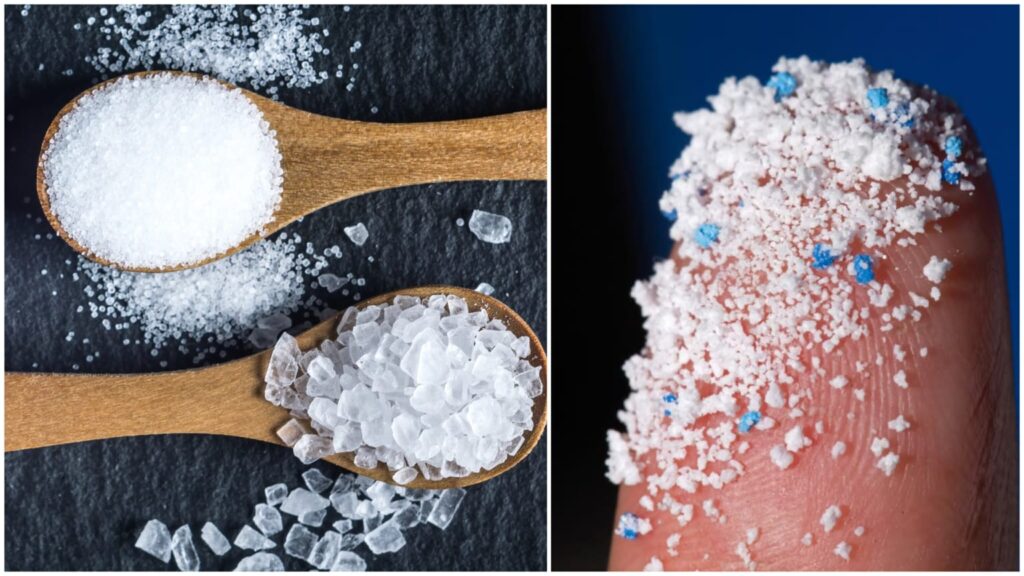A recent study by Toxics Link, a non-government organization working in environmental research and advocacy, found that all salt and sugar sold in India—both packaged and unpackaged, online and in local markets—contains certain levels of microplastics. The study analyzed 10 varieties of salt and 5 sugar samples.

The study, titled “Microplastics in Salt and Sugar” – that can cause cancer, examined 10 types of salt and five types of sugar sourced from online and local markets. The findings reveal a pervasive presence of microplastics across all samples tested, a PTI report stated.
Microplastics are commonly defined as solid plastic particles or synthetic fibers of the size between 0.1 mm to 5 mm. They are composed of various polymer types, such as polyethylene, polypropylene, polyethylene terephthalate, that can pose distinct environmental and health challenges.
Except for two salt samples and one sugar sample, all others were branded.
Out of the ten salt samples tested, three were packaged iodised salt, three were rock salt samples, including two organic brands, two sea salt samples and two were local brands.
Satish Sinha, associate director of Toxics Link, highlighted the urgency of addressing the issue, saying, “Our study’s finding of substantial amounts of microplastics in all salt and sugar samples is concerning and calls for urgent, comprehensive research into the long-term health impacts of microplastics on human health.”
Presence of Microplastics in Salt and Sugar
Research has revealed that all Indian salt and sugar brands, whether packaged or unpackaged, contain microplastics in significant amounts. The study found:
- Salt: 6.71 to 89.15 pieces per kilogram, with iodized salt having the highest quantity.
- Sugar: 11.85 to 68.25 pieces per kilogram, with non-organic sugar reporting the highest levels.
Impact on Human Health
The presence of microplastics in salt and sugar is alarming, as they can do the following:
- Enter the bloodstream directly through consumption
- Cause permanent alterations to cell structures, mutations, and chronic toxicity
- Damage lung tissue
- Act as a source of carcinogens
- Cause reproductive and developmental problems
Daily Consumption and Exposure
Indians consume an average of 10.98 grams of salt and 10 spoons of sugar daily, exceeding recommended levels. This translates to a minimum and maximum microplastics consumption of 0.55 and 3.71 pieces daily from salt and sugar alone.
What Can We Do?
- Reduce plastic usage and opt for eco-friendly alternatives
- Choose organic and also locally sourced products when possible
- Support policies promoting plastic reduction and recycling
- Encourage further research on microplastics’ impact on human health
Conclusion
As we season our meals with salt and sweeten our beverages with sugar, we must also consider the hidden presence of Microplastics. Awareness, research, and responsible consumption are essential steps toward minimizing our impact on the environment and safeguarding our health.
